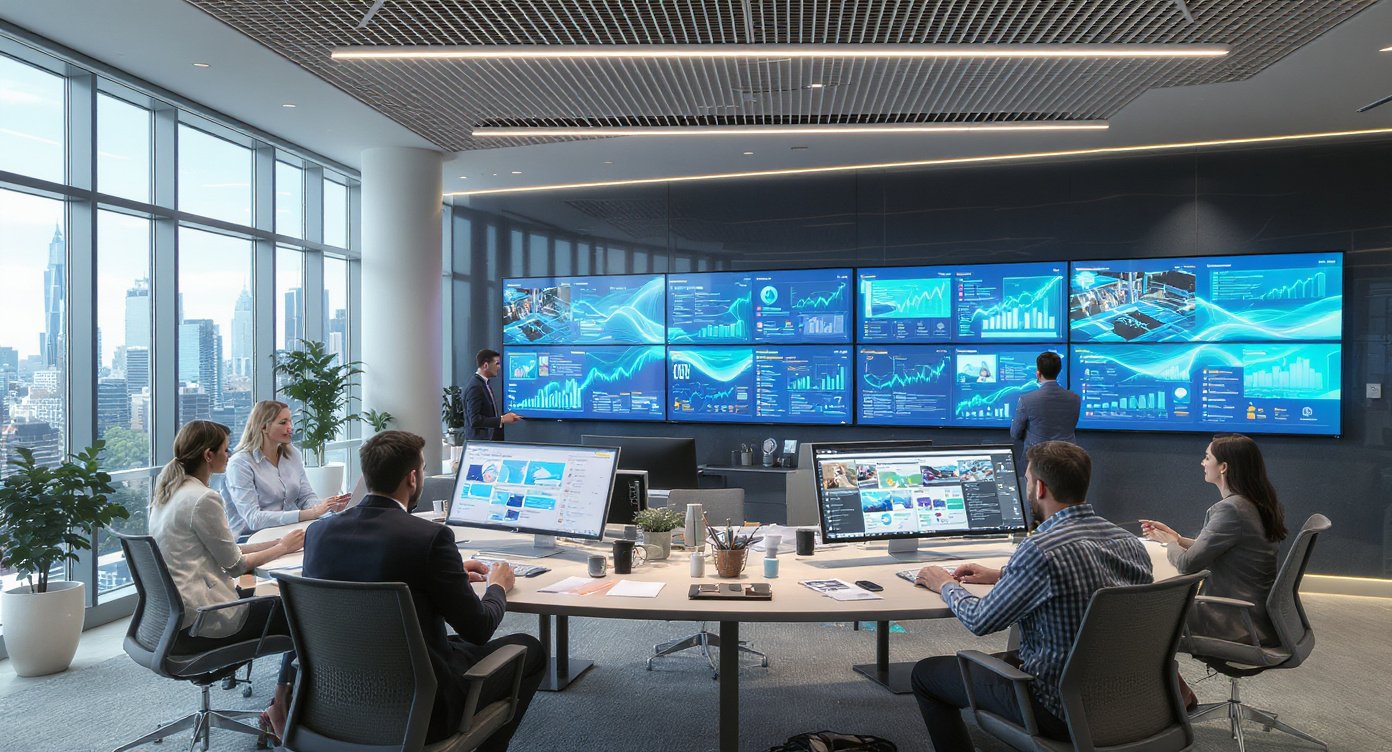Artificial intelligence is transforming industries at an unprecedented pace, and the world of audio visual design is no exception. From AI powered AV rack layouts to automated system documentation, software like XTEN-AV is changing how AV projects are planned and executed. As AI becomes more capable, many AV professionals are asking: will AI eventually replace human AV designers?
In this blog, we explore the pros and cons of AI in AV design, how it complements human expertise, and why tools like XTEN-AV are empowering designers rather than replacing them.
The Rise of AI in AV Design
AV design is a complex process involving equipment selection, system planning, cable routing, rack layouts, and signal flow management. Historically, these tasks were manual and prone to human error. AI has introduced automation, intelligence, and predictive capabilities that streamline many of these processes.
XTEN-AV, for example, uses AI to automate AV rack layouts, generate elevation drawings, optimize cable routing, and ensure compliance with technical standards. These capabilities significantly reduce repetitive tasks and allow AV professionals to focus on higher level design decisions.
Pros of AI in AV Design
1. Increased Accuracy
AI can process large amounts of data and apply rules consistently, reducing errors that might occur in manual design. XTEN-AV, for instance, calculates precise equipment placement, airflow, and power requirements, ensuring designs are reliable and functional.
2. Time Efficiency
Tasks that once took hours or days, such as generating rack elevation drawings or planning complex cable routes, can now be completed in minutes with AI. This accelerates project timelines and allows integrators to deliver solutions faster.
3. Predictive Capabilities
AI can forecast potential issues, such as overheating, equipment overload, or incompatible connections. By identifying problems before installation, designers can prevent costly mistakes and reduce rework.
4. Consistency Across Projects
AI ensures that best practices are consistently applied across multiple projects. This is particularly beneficial for large organizations or integrators managing multiple installations, as it reduces variability and maintains quality standards.
5. Data Driven Recommendations
AI tools like XTEN-AV leverage extensive equipment libraries, technical specifications, and design patterns to suggest optimized solutions. These recommendations can improve system performance and help designers make informed decisions.
Cons of AI in AV Design
1. Limited Creativity
While AI excels at optimization and automation, it cannot fully replicate human creativity. Innovative solutions, unique client requirements, and aesthetic considerations still rely on human judgment. Human designers bring intuition and experience that AI cannot match.
2. Over Reliance on Technology
Relying solely on AI can make designers complacent. Without understanding fundamental principles, designers may miss critical nuances that AI cannot detect, such as acoustics, user behavior, or specific client preferences.
3. Complexity and Learning Curve
Adopting AI tools like XTEN-AV requires training and adaptation. While the software streamlines many tasks, designers must learn to use the platform effectively to maximize its potential.
4. Cost of Implementation
AI powered design platforms can be expensive for small firms or independent designers. While the investment often pays off through increased efficiency, upfront costs may be a barrier for some organizations.
5. Ethical and Professional Considerations
AI cannot understand context, client expectations, or the subtleties of communication and project management. Human oversight is essential to ensure designs meet both technical and interpersonal requirements.
Will AI Replace Human AV Designers?
The short answer is no, not entirely. AI excels at automating repetitive, data driven tasks, improving accuracy, and speeding up workflows. However, human AV designers provide creativity, intuition, client interaction, and decision making that AI cannot replicate.
Instead of replacing designers, AI tools like XTEN-AV act as intelligent assistants. They reduce mundane tasks, minimize errors, and enhance the efficiency of the design process. Designers can focus on higher level thinking, problem solving, and customizing solutions for clients.
How Human Designers and AI Work Together
Collaboration Between AI and Humans
- Human expertise: Designers define the vision, interpret client needs, and make creative decisions.
- AI efficiency: XTEN-AV handles technical calculations, generates diagrams, optimizes layouts, and ensures compliance.
- Combined results: Projects are completed faster, with fewer errors, and still maintain the human touch required for client satisfaction.
Real World Example
A corporate AV integrator needed to design racks for multiple conference rooms. Using XTEN-AV, the team:
- Automatically generated rack elevation drawings and cable layouts
- Optimized device placement and airflow
- Focused on unique room requirements and aesthetics
The combination of AI and human insight resulted in accurate, visually appealing, and efficient designs delivered ahead of schedule.
The Future of AI in AV Design
As AI technology advances, its role in AV design will continue to grow. Future capabilities may include:
- Predictive maintenance suggestions based on equipment usage
- Real time design optimization using sensor feedback
- Integration with smart building systems for automated monitoring and adjustment
- Enhanced collaboration tools for remote teams
Despite these advances, human designers will remain essential for creativity, judgment, and client engagement. AI will increasingly act as a powerful tool to augment human capability, not replace it.
Conclusion
AI is transforming AV system design, and tools like XTEN-AV are leading the charge. From generating rack layouts to optimizing cable routing, AI improves accuracy, efficiency, and consistency across projects. However, AI cannot replace the human creativity, intuition, and client understanding that AV designers bring to the table.
The future of AV design lies in collaboration between human expertise and AI intelligence. Designers who embrace AI will be able to deliver better solutions faster, reduce errors, and provide higher quality service to their clients. Rather than a threat, AI is a valuable partner that enhances the capabilities of human AV designers and helps the industry achieve new levels of precision and efficiency.
By combining the strengths of AI and human insight, the AV industry can create systems that are not only technically excellent but also tailored to the unique needs of every client and space.
Read more: https://jigseo.com/how-ai-generates-av-rack-elevation-drawings-instantly/












Leave a Reply